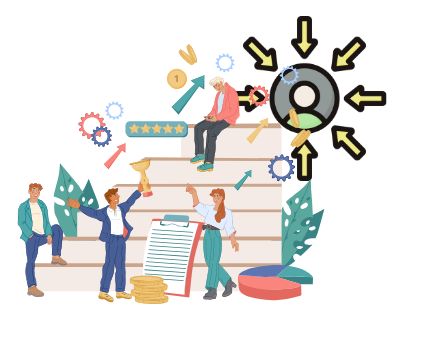Many brands today claim to be consumer-first or consumer-led.
However, their attempts often fall short of expectations, resulting in actions that lack the authenticity and depth consumers seek. Radical Consumer Centricity changes that.
This approach involves embedding consumer insights into every part of a company, driving long-term success by anticipating and meeting consumer needs precisely. It’s a transformational shift essential to gaining a lasting competitive edge in today’s market.
In this article, we’ll explore why Radical Consumer Centricity matters, how leading companies achieve a consumer-led structure, and why adaptable frameworks, such as C3Centricity’s QC2™ process, are crucial to effectively guiding this journey.
If you prefer to listen rather than read:
Why Radical Consumer Centricity Matters
As consumers become more informed, connected, and demanding, consumer-first approaches that lack depth lose their appeal. People expect brands not just to fulfill their immediate needs, but to understand, anticipate, and address their evolving desires.
A recent study by McKinsey found that 87% of companies leveraging advanced customer analytics outperform their competitors in customer retention and engagement (McKinsey).
Companies that use consumer insights to stay ahead aren’t merely reacting—they’re building deeper relationships that foster loyalty and keep consumers coming back.
Shifting to Radical Consumer Centricity allows brands to make decisions rooted in authentic consumer insights, paving the way for sustainable loyalty. By deeply understanding consumers and tailoring strategies to meet emerging needs, brands can align more closely with what matters most to their audience.
This approach requires an all-in commitment, from leadership buy-in to cross-functional collaboration. Consumer-led organizations consistently outperform in terms of agility and profitability, with consumer-centric companies proving to be 60% more profitable than those that are not (Bain).
Becoming Consumer-Led, Not Just Consumer-First
Achieving Radical Consumer Centricity means moving from consumer-first to consumer-led—a shift that puts consumer insights at the core of every strategic choice.
It’s about allowing the voice of the consumer to influence every area of the organization, from product design to marketing, support, and even company culture.
For companies that fully commit, the payoff is considerable: increased loyalty, faster market adaptation, and a stronger connection with Consumers.
A leading example of this approach is Monzo, a digital-first bank based in the UK. Monzo’s commitment to customer-led innovation sets it apart in a competitive landscape. Monzo doesn’t just listen to customer feedback; it actively engages users in co-creating the bank’s services.
By gathering and responding to feedback on features, policies, and services, Monzo has developed innovations like “Split the Bill” and “Savings Pots” based directly on user requests.
This collaborative approach has turned Monzo into one of the UK’s most recommended banks, with over 80% of users willing to refer Monzo to friends (Monzo Investor Relations).
Monzo’s example shows how brands that embrace Radical Consumer Centricity become indispensable to their consumers’ lives.
By letting their customers shape the brand, Monzo has created a model where users feel they have a stake in its growth.
When consumers … Click to continue reading














